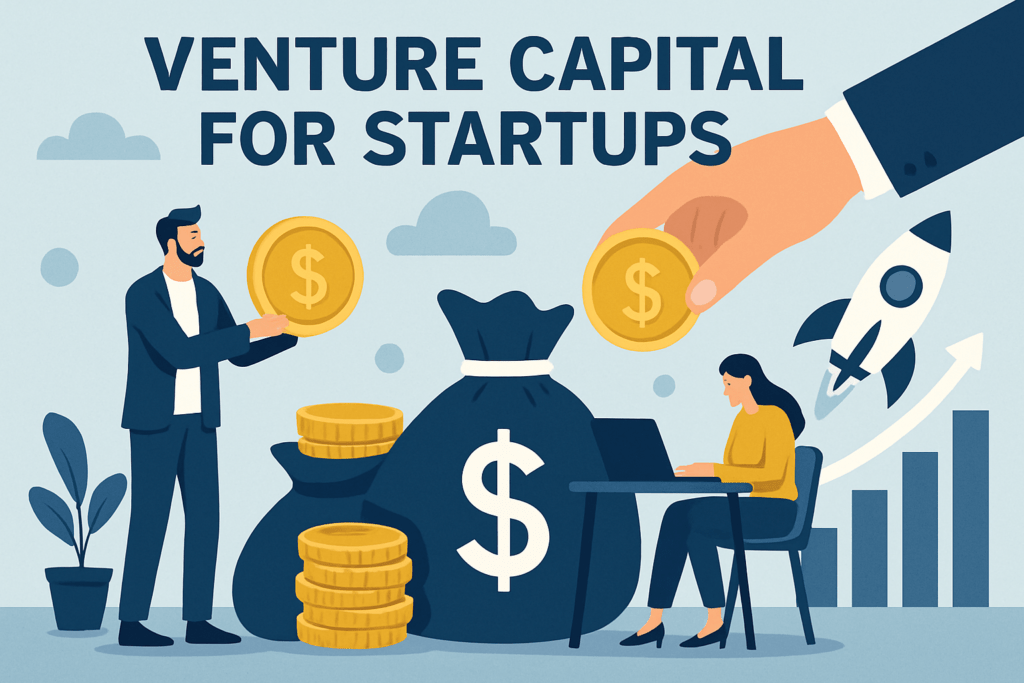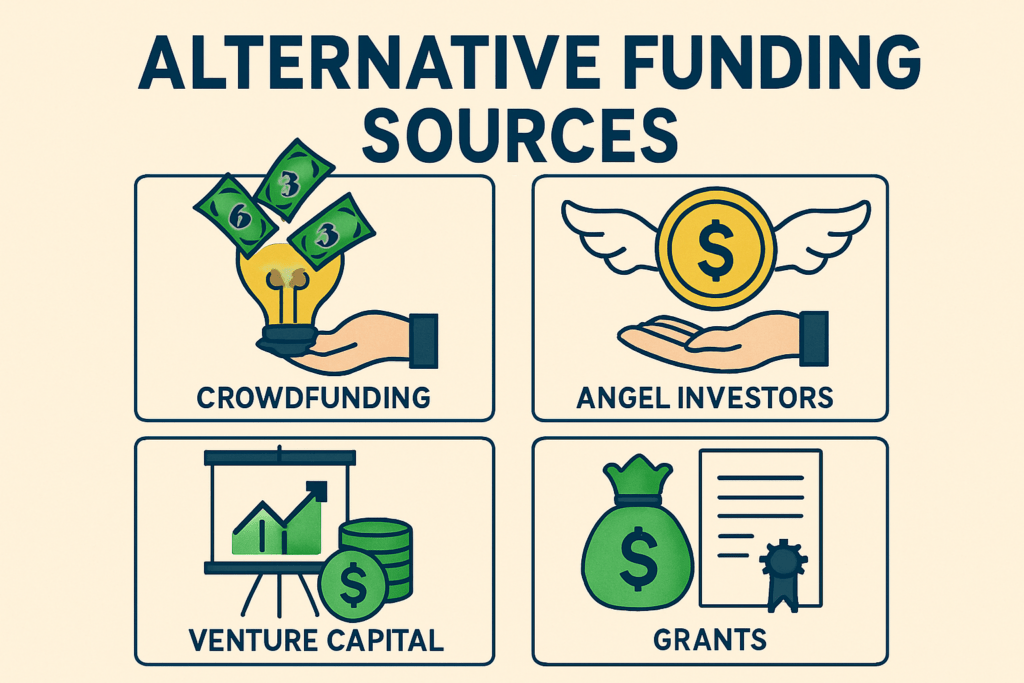Venture Capital for Startups: The Modern Playbook
- Cut through the noise: why venture capital matters for scaling startups in 2025 and beyond.
- Overview of what VCs look for and the changing investment landscape.
- Introduction of the main keyword: venture capital for startups.
Venture Capital for Startups: The Modern Playbook
There’s a lot of hype, jargon, and downright nonsense thrown around when it comes to funding startups—but at the end of the day, venture capital is still the main rocket fuel for ambitious founders chasing scale. Why? Because scaling a business in 2025 demands more than just hustle and a slick product. It takes access to capital, networks, and, just as often, a reality check.
So, let’s cut through the noise. Venture capital for startups isn’t just about writing big checks. VCs trade money for a bet on your team, your tech, and your total addressable market (TAM). In exchange, they expect hyper-growth with the promise of outsized returns. The world is changing fast: newer funds, micro VCs, and even crowdfunding are altering where the money comes from. Still, institutional VC—think a syndicate of seasoned investors putting millions behind high-risk, high-reward bets—remains the gold standard for startups hellbent on blitzscaling.
What are VCs scanning for? Conviction in your story, sure, but also hard numbers—actual traction and potential for category dominance. The investing landscape is evolving fast for 2025: sectors like AI, climate tech, and life sciences are hot; the bar for diligence is higher than ever. The main keyword here—venture capital for startups—means more than capital. It’s a playbook for founders who plan to move fast, punch above their weight, and build something built to last. Buckle up.
What Happens After Winning Millions?
Winning a life-changing lottery jackpot is every player’s dream, but few are prepared for what comes next. The sudden influx of wealth can bring excitement, but also a wave of challenges. Many winners find themselves overwhelmed by financial decisions, from managing taxes to making smart investments. Some handle it well, while others struggle with reckless spending that drains their fortune faster than expected.
The Financial Reality of Winning
Many winners face critical financial decisions almost immediately:
- Taxes and Legal Issues
- A large chunk of the winnings often goes to taxes, and failing to plan can lead to legal troubles.
- Investing vs. Spending
- Some winners hire financial advisors to ensure long-term security, while others spend impulsively without a plan.
- Budgeting for the Future
- Without proper money management, even the biggest jackpots can disappear quickly.
A Lifestyle Overhaul
A sudden fortune changes life in more ways than one:
- Luxury Purchases
- Mansions, sports cars, and extravagant vacations become instantly affordable.
- Social Pressure
- Long-lost friends and distant relatives often reappear, expecting a share of the winnings.
- Privacy Challenges
- Some winners struggle with unwanted media attention and public scrutiny.
While some winners embrace their new wealth openly, others choose to live discreetly to avoid pressure and expectations.
Giving Back and Creating a Legacy
For some, wealth is not just about personal luxury—it’s an opportunity to make a difference. Many winners choose to:
- Charitable Contributions
- Donate to charities and community projects.
- Educational Support
- Fund scholarships or support education initiatives.
- Business Investments
- Invest in businesses that create jobs and opportunities.
Some lottery winners go from players to philanthropists, proving that wealth can be used to leave a lasting impact. However, not all stories end positively—many who fail to manage their winnings properly find themselves bankrupt within years.
The Capital Acquisition Journey: Getting Ready
Before you even think about pitching a VC, pump the brakes. The fastest way to a hard “no” is to show up half-baked. Capital acquisition isn’t luck—it’s preparation meeting opportunity. So, here’s your pre-game checklist:
1. Nail Your Milestones
Every investor wants traction—you know, that proof your idea has real demand. That means users, revenue, partnerships, or whatever matters in your space. Have a clear timeline: product built, pilot launched, first paying customers in. “We plan to…” isn’t enough. Show what you’ve actually done.
2. Know Your Metrics Cold
Venture capital for startups is a numbers game. You need to know your Total Addressable Market (TAM), your month-over-month growth, your burn rate. Be ready to tie these numbers to your vision. Don’t inflate them—VCs can smell nonsense a mile away. Honesty over hype, always.
3. Your Team Matters More Than You Think
Investors back people first, ideas second. Know your story, and be able to articulate why your team is the one to crack this nut. Highlight complementary skills, past wins, even the failures that shaped your grit.
4. Tell a Tight Story
Don’t just list facts—connect the dots. Show how your traction, market, and team make this a VC-backable business. The narrative should be clear: here’s the pain point, here’s why we solve it better than anyone else, and here’s the evidence.
5. Common Founder Blind Spots
Too many founders forget that raising capital isn’t the goal—building a business is. Prepping for VC isn’t about making yourself look good, it’s about proving real, scalable potential. Also: get your legal and financial documents in order (cap table, incorporation, IP). Sloppiness here is a red flag.
In short: don’t start ring-shopping for VC before you’re actually ready to walk down the aisle. Prep hard, know your metrics, and build a company worth investing in. The capital follows.
The VC Pitch: Winning Hearts, Minds, and Term Sheets
Let’s get straight to it: pitching to VCs isn’t about dazzling them with buzzwords or deck aesthetics. It’s about building trust—fast. Here’s the bulletproof sequence most founders face, and how to actually move the needle.
First, the intro. Warm intros beat cold emails 9 times out of 10. Network, ask for referrals, and don’t be shy about tapping any legitimate connection to get your foot in the door. You want to surface on a partner’s radar, not a generic form fill.
Next up, the conversation (not “presentation,” not “performance”). Your deck’s job? To keep you on track—not to do the talking for you. The real pitch is a conversation about risk and growth potential. Lead with your core metrics (revenue, users, traction), but frame your story: why this market, why now, why your team? Pull no punches about obstacles—VCs can spot wishful thinking from a mile away.
If you make it past the first call, expect a series of deeper dives. You’ll meet more partners, sometimes associates. Here’s the play: keep answers tight, data handy, and always steer back to the core vision. VCs don’t just want a business—they want a movement. Show them why your startup can lead it.
What founders miss: VCs aren’t ATMs. They’re judging founder-market fit, resilience, and coachability as much as spreadsheets. If you bristle at tough questions or spin every risk into gold, you’ll lose credibility. Welcome pushback. Recognize what you don’t know. The best pitches turn tough questions into collaborative moments—proving you can adapt, think critically, and listen.
When there’s interest, the process quickens. Expect diligence, more meetings, and—if you’re lucky—term sheets. Don’t celebrate too soon; until you sign, momentum matters. Keep all conversations moving, manage timelines, and communicate thoughtfully with every investor on your list (FOMO is real, but so is ghosting).
For a no-fluff, tactical breakdown, check out how to craft a successful investor pitch. In the end, winning hearts and minds isn’t about wizardry—it’s about clarity, grit, and owning your narrative, start to finish.
Navigating Term Sheets and Due Diligence
Let’s get straight to it: the term sheet is where hopes get made (or dashed). Think of it as the blueprint for your future partnership with a VC—it spells out how much ownership you’re giving up, who calls the shots, and what happens if things go nuclear. Not all clauses carry the same weight, but understanding what’s up for negotiation—and where you absolutely shouldn’t budge—is what real VC navigation is about.
What’s Negotiable (and What’s Not)
The headline terms—valuation, amount raised, equity stake—tend to get all the attention, and yeah, you can negotiate here (within reason). But the devil’s in the details: liquidation preferences, board seats, anti-dilution rights, and vesting schedules can make or break your long-term upside. Watch out for multiple liquidation preferences (that’s VCs getting paid back first, sometimes more than once) and heavy-handed anti-dilution (which can wipe out your ownership if you raise at a lower valuation later).
On the flip side, don’t expect to win every battle. VCs will almost never give up basic protective provisions, like the right to veto a sale or raise. Some things (like regulatory compliance language) are boilerplate—move along.
Common Founder Pitfalls
Mistake #1: focusing only on headline valuation and ignoring the structure. A high valuation with ugly liquidation preferences or harsh anti-dilution can sting later. Mistake #2: skipping legal counsel to save a buck. Don’t. Term sheets are full of landmines that a decent startup lawyer can help spot fast.
The Due Diligence Gauntlet
So you’ve signed the term sheet. Congrats—but you’re not done. Now comes due diligence, the point where VCs poke under the hood. They’ll want to see financials, user data, cap tables, legal documents, IP assignments. Do yourself a favor: get organized before the process starts. Sloppy or missing records will slow you down, and it signals to investors you’re not as on top of things as you should be.
Bottom Line
Term sheets and due diligence are a test of your attention to detail and your grip on VC navigation. The cleanest way through: negotiate what matters, sweat the details, and prep your house before the VCs step in the door. Don’t treat this as paperwork—this is the foundation for your startup’s future.
After the Raise: Value Beyond the Money
Raising venture capital isn’t just about the wire transfer that lands in your account. The best VCs bring more to the table than cash—they become partners in the trenches. Expect real support when it counts: introductions to experienced hires, access to follow-on capital, help with that tricky enterprise sales deal, or just connecting you to someone who’s already fought (and won) a battle you’re about to face. The right VC can open doors that were bolted shut before.
But here’s the hard truth: the relationship only works if you manage it. That means regular updates—brief and honest, not just fluffy slides. Set a cadence for communication. Flag issues early. Good VCs don’t expect perfection; they value transparency, and they’re most helpful when they know the real scoreboard. Treat your VCs like the partners they are: ask for help when you need it, but drive your own ship. Investors remember founders who are straightforward and show up when things get rough, not just when the growth curve is up and to the right.
Bottom line: capital gets you to the starting line, but what VCs do for you after the raise can set the pace for the whole race. Use that leverage, but don’t lean on investors for all the answers. Build a rhythm of trust, and the partnership pays off well beyond the bank balance.
What Happens After Winning Millions?
Winning a life-changing lottery jackpot is every player’s dream, but few are prepared for what comes next. The sudden influx of wealth can bring excitement, but also a wave of challenges.
Financial Realities
Many winners find themselves overwhelmed by financial decisions, which include:
- Tax Implications: Managing taxes can be complex, and without careful planning, winners can face unexpected liabilities.
- Investment Strategies: Making investments that secure their future requires knowledge and discipline.
- Advisory Services: Hiring financial advisors can be beneficial, but some winners struggle and fall into reckless spending.
Without proper planning, the dream of endless riches can quickly turn into a financial nightmare.
Lifestyle Changes
For many, lifestyle changes happen almost immediately, leading to:
- Luxurious Purchases: Winners often indulge in luxury homes, exotic cars, and extravagant vacations.
- Social Dynamics: Friends and distant relatives might emerge, hoping for a share of the winnings, creating tension and difficult choices.
- Privacy Concerns: Some winners choose a low-profile life to avoid the pressure and attention that come with sudden wealth.
Whether they embrace luxury or opt for discretion, adjusting to their new reality is never as simple as it seems.
Leaving a Legacy
Beyond personal wealth, some winners use their fortunes to make a positive impact in several ways:
- Charitable Donations: Many winners contribute to charities and community projects.
- Educational Support: Funding scholarships and launching educational initiatives are common.
- Business Investments: Investments in businesses and local economies can drive growth and revitalization.
Stories of winners funding scholarships, launching nonprofits, or revitalizing struggling towns illustrate that the way winners handle their newfound riches determines not just their own future, but also the legacy they leave behind.
Conclusion: What Sets Winning Founders Apart
Here’s what actually moves the needle: clarity, preparation, and smart partnership. The best founders don’t just chase checks—they know exactly why they’re raising, what kind of growth they’re ready for, and how to build real relationships with their backers.
Clarity means dialed-in metrics, unflinching honesty, and a crisp story. Preparation is hitting milestones before you ask for money, and having answers to questions VCs haven’t even asked yet. And partnership? The real game isn’t just getting funded, but knowing how to work with investors—using their networks, their influence, and keeping the lines of communication open even when things go sideways.
It’s a crowded market. To stand out, focus on raising smart capital—money that comes with guidance, doors opened, and real chemistry. Use every intro wisely, and don’t waste time on scattershot asks. The new playbook isn’t about outspending or out-hyping the competition. It’s about execution, grit, and making yourself the obvious bet. Get these fundamentals right, and you give yourself a shot at building something that lasts.




